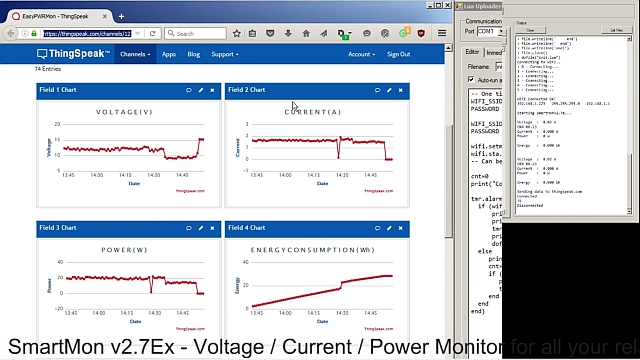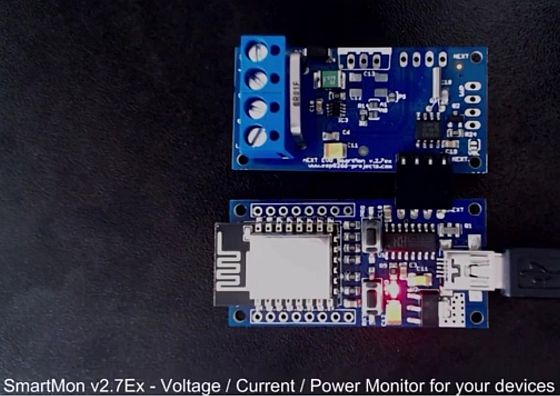I was in the process of preparing a post about how to easy breadboard ESP-01 modules but meanwhile I have received the new ESP-07 variant.
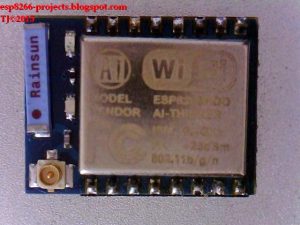 |
|
| ESP-07 Module |
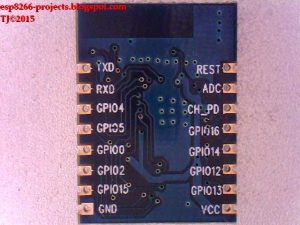 |
||
| ESP-07 Pinout |
After the initial frustration with ESP-07 and after repairing it as explained in the previous post, I have decided that it will more interesting to use this one for the projects (more GPIO lines, easier deep-sleep thru GPIO16, ADC pin, 4M flash). Indeed, they are 2mm pin spacing, so is not breadboard friendly, but is easy to find a home-made solution :).
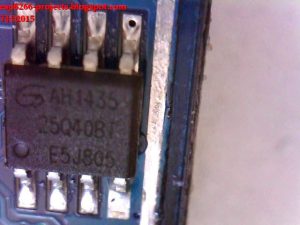 |
| Flash Memory – 4M |
The idea was to create a “cheap and dirty” basic development board (aka. CBDB) for ESP8266 that can be used with no or very small changes in a variety of projects and tests. And as been asked to be a “cheap and dirty” version, whole BOM list can be seen in the picture below :
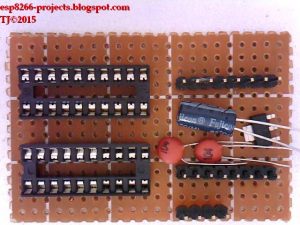 |
| BOM “List” |
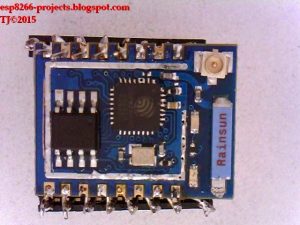 |
|
| “Magic” Adapter – TOP |
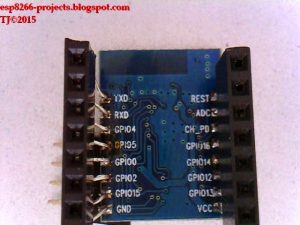 |
|
| “Magic” Adapter – Bottom |
Now about CBDB schematic: basically is a minimal connections board with a 3.3V regulator that properly boot the ESP-07 module in normal and flash programming mode. 2 extra “high-tech-hard-to-find” DIP20 sockets will act as expansion slots for the different modules that can be used with.
ESP-07 minimal connection:
1. Normal operation mode
- GND – GND
- VCC – 3.3V
- CH_PD – 3.3V
- GPIO15 – GND
2. Flash Programming mode, add also to (1)
- GPIO0 – GND
For the 3.3V regulator is used the standard LD1117V33 Datasheet. I will recommend you to use some proper ones as for the Ebay cheapest clones “Output current up to 800 mA” might vary from batch to batch from 200-250mA (lucky one) to a max 80mA with magic smoke included(not so lucky one)!
And also, especially if you think about some battery operated things in the future, use some good capacitors. Please observe the luxury item in the BOM list. Did you find it? 🙂 (I’ve changed my mind: use some decent capacitors all the time. Better. Period)
Regulator schematic used is the one from the Datasheet:
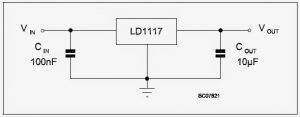
The result of 10-15 minutes of soldering fun :
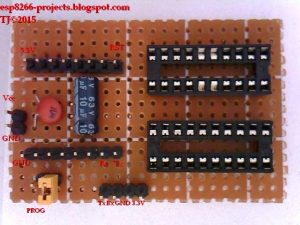 |
| CBDB – Top Layer |
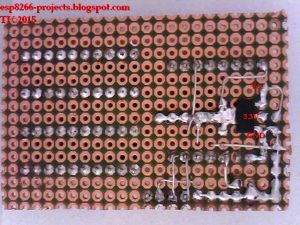 |
|
| CBDB – Bottom Layer – scary and ugly like hell, I know 🙂 |
The Yellow jumper is used for connecting GPIO0 to GND for flash programming mode. Simply remove power put the jumper and power it on. When done, remove and repeat the power cycle to restart in normal operation mode.
For connection to the PC we will need separately also a USB to Serial TTL converter, or RS232 to Serial TTL, as you wish, but I presume everybody use the USB ones. Please be sure that it is 3V compatible!!
<magic smoke advertise>ESP8266 board is a 3V board and will not tollerate very well 5V logic levels!! At all </magic smoke advertise>
You can find them on Ebay, lot of models and types. Like this one, as been 3V compatible and also very flexible in configuration, having all pins wired out, see below
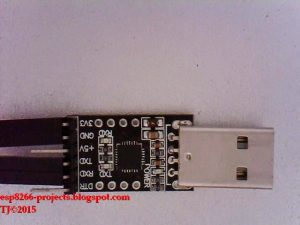 |
|
| CP2102 – Top |
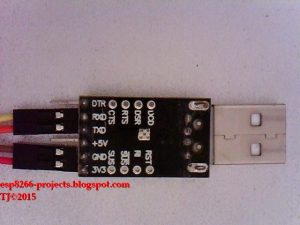 |
| CP2102 – Bottom |
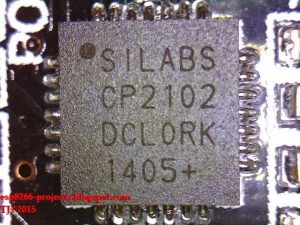 |
| CP2102 – USB / Serial Adapter |
I will recommend you to use an external power supply, the usual hobbyist “recycled” 5V/700mA USB charger must be more than enough. I didn’t had the chance to measure until now the power consumption of the ESP-07 module but one thing I can tell you, ESP-01 was a hungry one: 250-280mA in full WIFI mixed mode, connected and transmitting data!
Now, with all the pieces of the puzzle in place, let’s connect them and power up !
USB Adapter – CBDB Dev Board :
- RXD – Tx – Yellow wire
- TXD – Rx – Orange wire
- GND – GND – Brown wire
- 3V3 – NOT USED – Red wire
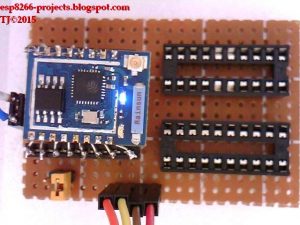
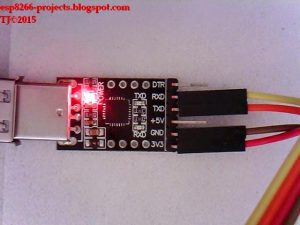
Few comments: I was able to normal start and also reflash the ESP-07 module using 3V3 power pin from the USB adapter, thing that was not possible with ESP-01! I suppose something changed in this version of ESP8266 power management and they reduced somehow the consumption. I will allocate a separate post for power consumption, testing, etc. I think it’s an important subject and will worth the allocated time.
I suppose you have already installed and tested the USB adapter. It’s not the scope of this presentation.
After all connected together, plug the USB adapter, open your most loved serial terminal program (putty, termite, hyperterm, whatever) with “CR-LF” option enabled, 9600bps, 8N1, no handshake, choose the right corresponding port, and power up the CBDB.
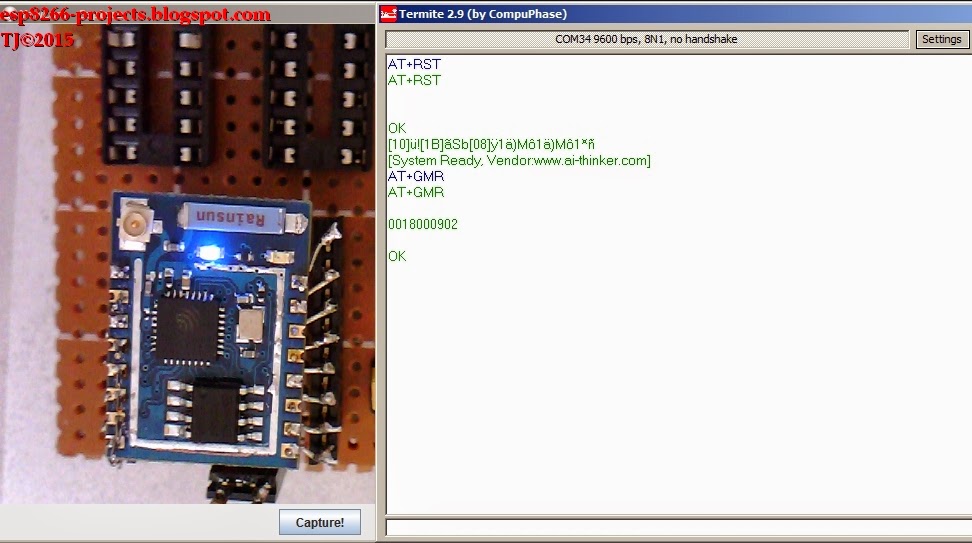 |
|
| CBDB First Boot – AT Firmware preinstalled from supplier |
As you can see in the picture above, it was booting OK, having preinstalled from supplier the AT firmware. That means that can be programmed and tested with AT commands:
- response to the reset comand- OK
- response to the version info interogation – OK
For an extensive set of available AT commands, please consult AT Instruction Set link
That’s all for now, I hope you enjoyed, stay tuned for the next one when we will go thru the reflash process for the ESP-07 module and move on, on programming!
